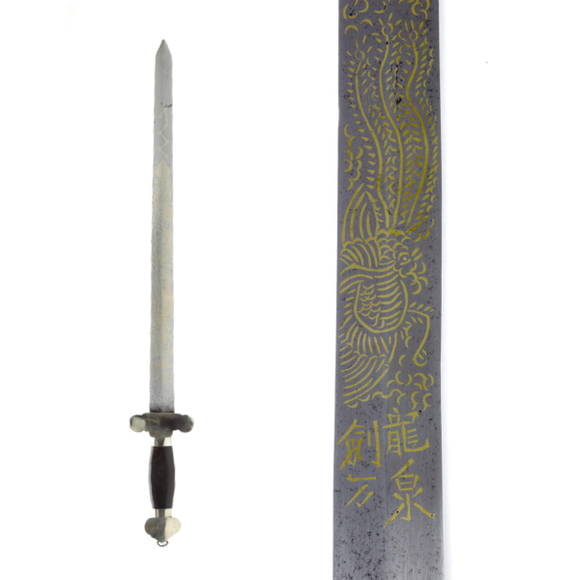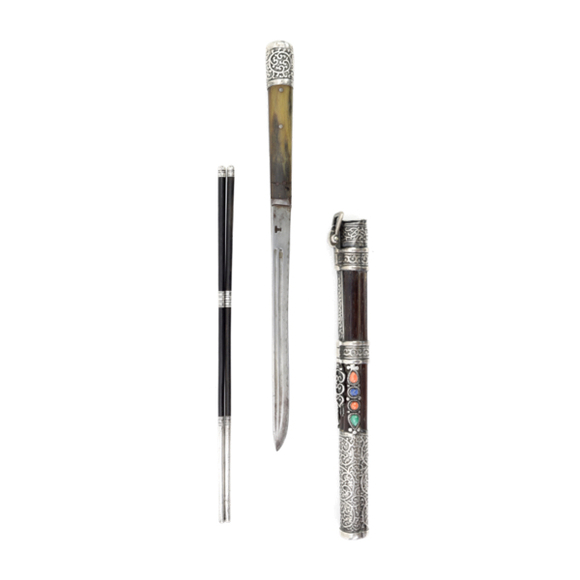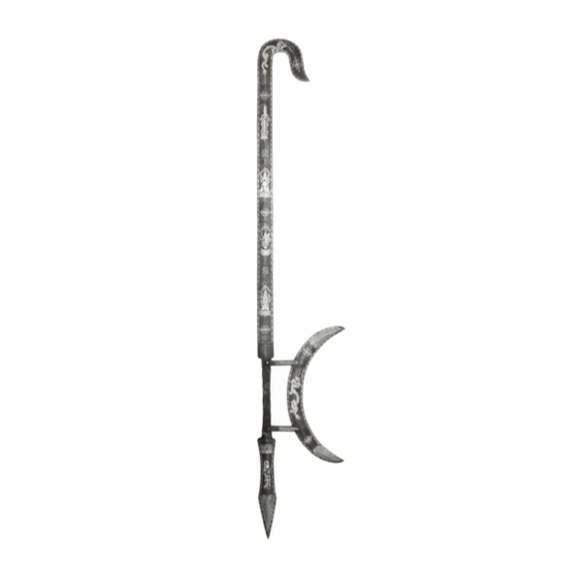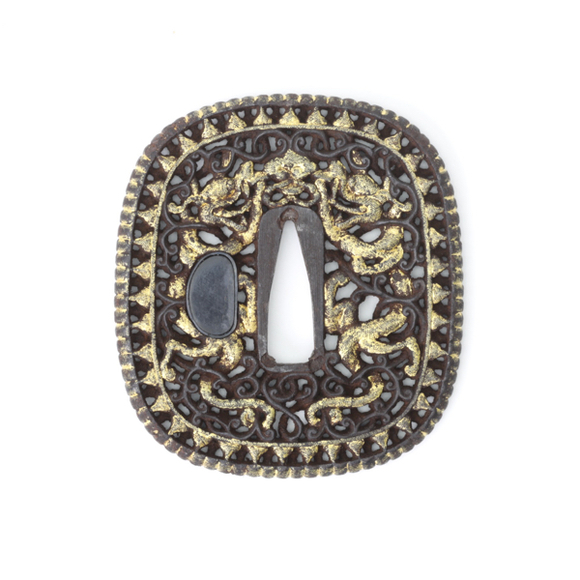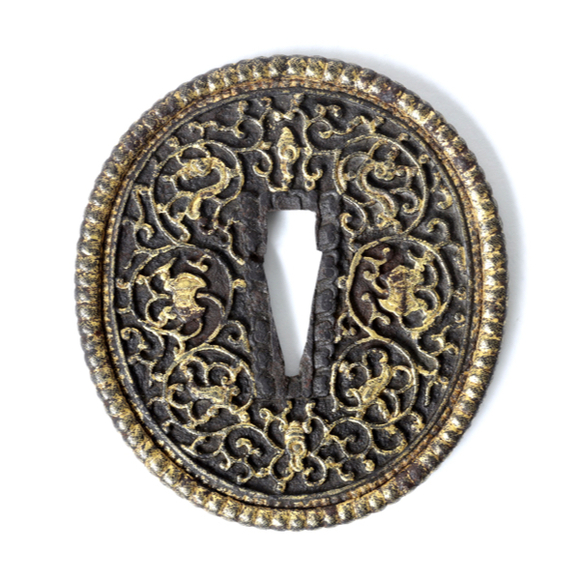Language: Mandarin Chinese
Source: Classical literature
The zhǎnmǎdāo (斬馬刀), literally "horse cutting blade" is best known as a very large two-handed saber as used by Qing troops.1
The name, however, was applied over the course of time to a variety of weapons.
First mention of a horse cutting sword
The first mention of a so-called "horse cutting sword" can be found in the Hanshu (漢書) of the 1st century A.D.2 The piece mentioned is called the Shàngfāng zhǎnmǎjiàn (尚方斬馬劍) or "Imperial Workshops Horse Cutting Sword", a powerful sword of state that was made for the emperor. If the sword was presented to an individual, it meant he had a license to kill without prior approval of the court.3
Notice that the name implies that it is a double-edged sword, a jiàn (劍).
The reference to horse cutting in this case refers to the power of the sword and not so much to its intended purpose.
Zhǎnmǎdāo in the Song dynasty (960 - 1279)
References to zhǎnmǎdāo (斬馬刀) go back to at least the Song dynasty:
“In the 5th year of Xining the workshops made zhǎnmǎdāo that were about 3 chi long and that had ring pommels. When the tortoise pattern stands out on its surface, it indicates excellent manufacture. It is easy to use in parrying, it is a good tool for war.4
-Wang Yinglin, 1252
Zhǎnmǎdāo in the Ming dynasty (1368-1644)
During the Ming the zhǎnmǎdāo turns up in the illustrated Sì Zhèn Sān Guānzhì (四鎮三關誌) written between 1574-1576.5

Ming zhǎnmǎdāo in the Sì Zhèn Sān Guānzhì of 1574-1576.
As we can see, the weapon is clearly a pole-arm here and it will remain listed as such in subsequent publications like the 1585 Jing Guo Xiong Luo (經國雄略), written by the uncle of Zheng Chenggong, a.k.a. Koxinga:6

Ming zhǎnmǎdāo in the Sì Zhèn Sān Guānzhì of 1574-1576.
Ming dynasty records keep referring to the zhǎnmǎdāo as a (semi-)polearm until the very end of the dynasty, as is seen from for example the 1638 Wǔbèi yàolüè (武備要略):7

A Ming zhǎnmǎdāo depicted alongside a yǎnyuèdāo in de 1638 Wǔbèi Yàolüè.
Zhǎnmǎdāo in the Qing dynasty (1644-1912)
It wasn't until the Qing dynasty that the zhǎnmǎdāo took the form it is mostly known by today: A great saber. It was one of five large two handed sabers that were issued to the Green Standard Army, for the others, see my article: Chinese Long Sabers.
The description of the Qing zhǎnmǎdāo from the 1766 woodblock version of the Huángcháo Lǐqì Túshì:8
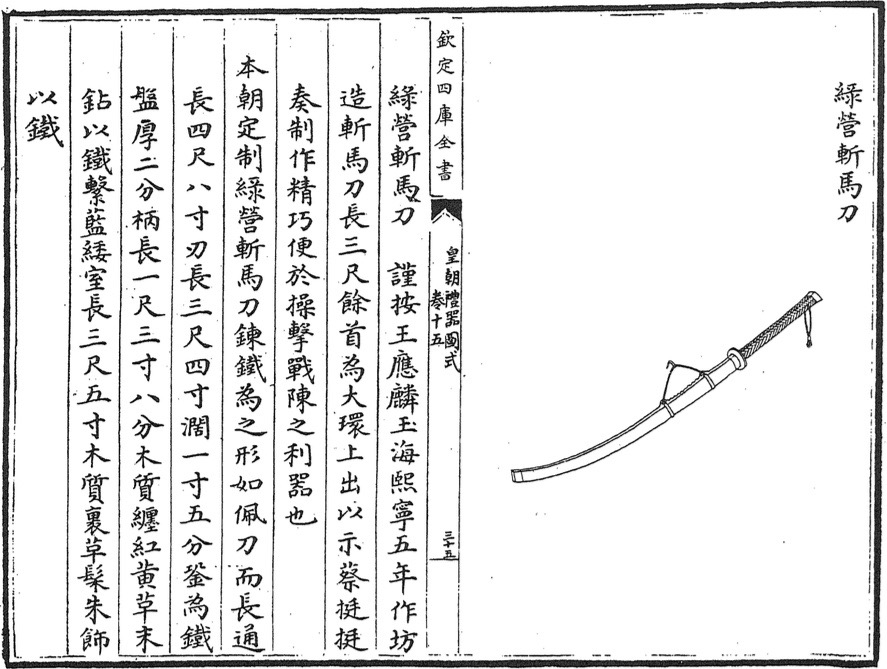
The text begins with the quote from Song period "Jade Ocean" that I reproduced above. Then it continues:
"The regulations of our dynasty:
Made of forged iron [as to produce steel], it is shaped like a peidao.
Overall 4 chi 8 cun long. (Approx. 168 cm / 66 inch)
The blade is 3 chi 4 cun. It is 1 cun 5 fen wide.
It has an iron disc guard that is 2 fen thick.
The handle is 1 chi 3 cun 8 fen and made of wood, wrapped with red and yellow leather.
It has an iron pommel and a blue lanyard.
Scabbard 3 chi 5 cun, wooden handle wrapped with leather, lacquered vermillion. Iron fittings."
While very large at nearly 170 cm, the Qing dynsty zhǎnmǎdāo is not the longest of Qing great sabers, which is the Green Standard Army chángrèn dàdāo (長刃大刀) or "long bladed great saber". From detailed regulations on the manufacture of these swords we can gather that the zhǎnmǎdāo is the thickest and most substantial of them all:
"Construction of the horse cutting saber;
Every zhanmadao is 4 chi 8 cun long.
The blade inside is 3 chi 4 cun long.
Inserted steel edge, forge folded [body].
Both sides are polished to make the lines appear.
Wooden handle is tied with braided leather strips.
Wooden scabbard is covered with leather and lacquered.
Mounts of fire lacquered iron finish the manufacture.
Blade is 3 chi 4 cun long, 1 cun 5 fen wide, back is 3 fen thick.
Tang is 1 chi 3 cun 5 fen long, wide 5 fen, 2 fen thick.
It weighs 4 jin 5 liang 3 qian" 9
Conversions:
Overall length: 168 cm
Blade length: 119 cm
Blade width: 5.25 cm
Spine thickness: 10.5 mm
Tang: 47.25 cm by 17.5 mm by 7 mm
Weight: 2585 grams
By comparison, the zhǎnmǎdāo's only rival in size, the chángrèn dàdāo, is:
Overall length: 178.5 cm
Blade length: 115.5 cm
Blade width: 5.25 cm
Spine thickness: 7 mm
Weight: 1850 grams
Conclusion
The zhǎnmǎdāo took various forms throughout history. The first appearance of a horse cutting sword was a legendary imperial sword. The Song dynasty zhǎnmǎdāo with its length of only 3 chi (about a meter) wasn't that large, and the Ming versions in turn were large blades on long poles. Only in the Qing dynasty did the sword get its now most famous shape.
Notice how long it is, at 168 cm there are few pieces today that are customarily classified as zhǎnmǎdāo that would actually be zhǎnmǎdāo. Many instead are probably one of the many other forms of long sabers in use during the Ming and Qing.
Notes
1. Huángcháo Lǐqì Túshì (皇朝禮器圖式) or "Illustrated Regulations on the Ceremonial Paraphernalia of the Dynasty", edited by Yun Lu. 1766 woodblock edition based o a 1759 manuscript. Chapter 15.
2. Ban Biao (班彪) (3–54 A.D.) and his son Ban Gu ((班固) (32–92 A.D.); Hànshū (漢書) or "Book of the [Former] Han".
3. See Wikipedia 尚方寶劍.
4. Wang Yinglin; Jade Ocean (玉海), compiled in 1252 as a manual for preparing for the great state examinations. It was published in 1337. The 5th year of Xining corresponds to the year 1073, at the time of the Northern Song dynasty. The Song military was in constant war with the mounted Jurchen armies of the Jin dynasty.
5. Liu Xiaozu; Sì Zhèn Sān Guānzhì (四鎮三關誌) or "Four Towns Three Passes" written between 1574-1576.
6. Zhèng Dàyù (鄭大郁), compiler; Jing Guo Xiong Luo (經國雄略), 1585.
7. Cheng Ziyi; Wǔbèi yàolüè (武備要略), 1638.
8. Huángcháo Lǐqì Túshì (皇朝禮器圖式) or "Illustrated Regulations on the Ceremonial Paraphernalia of the Dynasty", edited by Yun Lu. 1766 woodblock edition based o a 1759 manuscript. Chapter 15.
9. Qinding Gongbu Junqi Zeli (欽定工部軍器則例) or "Imperial regulations and precedents on weapons and military equipment by the Ministry of Public Works", 1813. Chapter 36.

